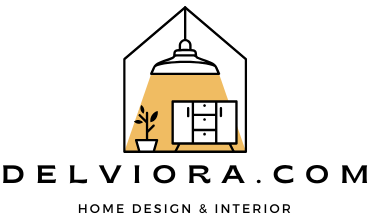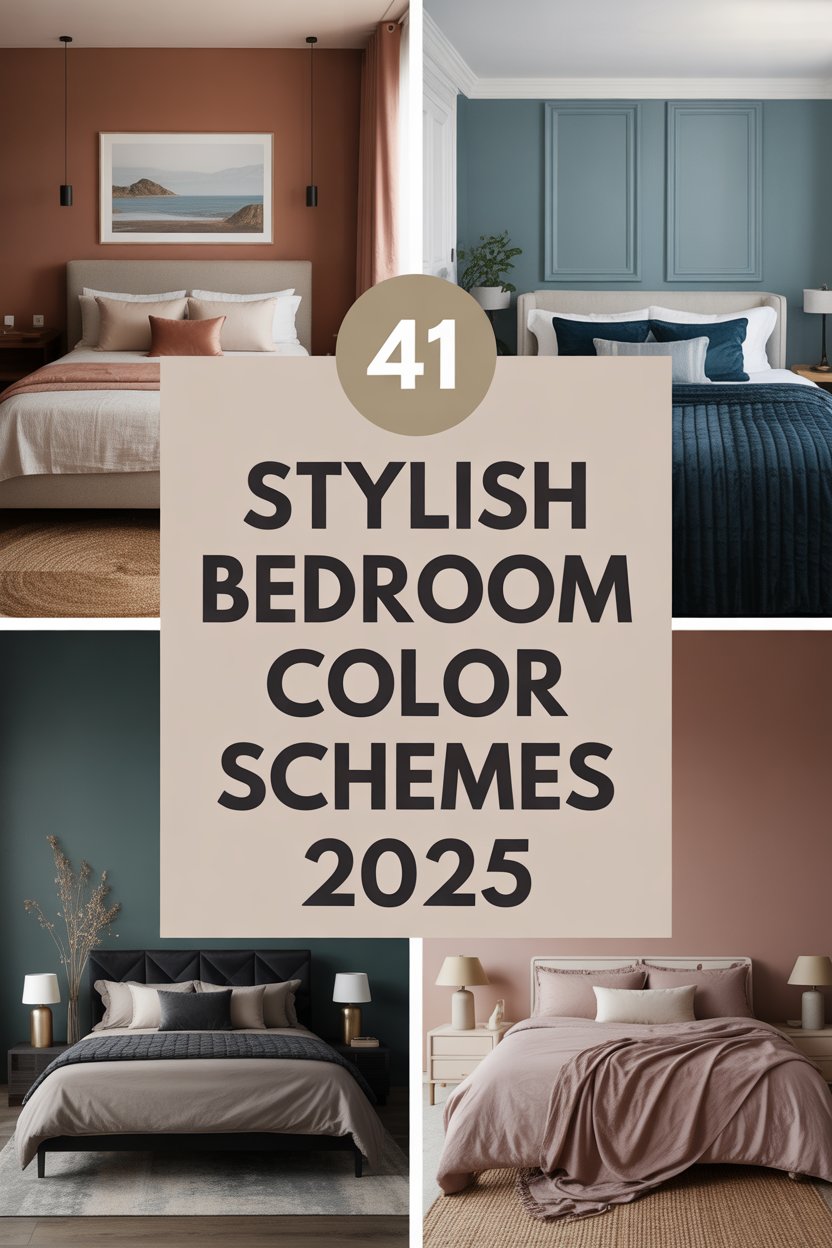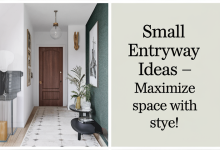Clean Room Aesthetic 2026: 45 Ideas You Can Actually Use
“Clean room” in 2026 isn’t sterile—it’s soulful order. Calm spaces still carry personality: less stuff, more intention, softer shapes, and smarter storage. Below are 45 fresh, practical ideas—from color moves to upkeep rituals—each shaped for real homes and busy lives.
Soft Reset: The Comfort-First Minimal
The clean room of 2026 starts with restraint, then layers warmth so cozy vibes feel intentional, not cluttered. A neutral base lets textiles and lighting do the heavy lifting; think tactile throws, rounded edges, and soft task lamps. It’s the balance between calm surfaces and lived-in ease, the kind that welcomes a nap but never looks sloppy. A single statement chair or plinth table grounds the room, while hidden storage swallows the daily mess. This is cozy minimalism—quiet lines, generous texture, and a layout that makes breathing room a feature, not a luxury.

Blush Momentum: Micro-Doses of Color
For a modern, clean look, measured color beats saturation; a whisper of pink on a lamp, vase, or lumbar pillow animates neutrals without crowding the eye. Treat blush as a highlight, not a wall-to-wall commitment, and pair it with matte ceramics or stone for grounded contrast. Blush adds a soft, warm touch around sleek metallic finishes and contrasts beautifully with evening light, inviting a human essence to a meticulous area. Having narrow, slim furniture adds a modern touch while maintaining sightlines.

Cloud-White Core: Purify the Palette
White remains a go-to hue for instant clarity, but by 2026, the trend will shift to more nuanced whites—bone, chalk, and ecru—layered in place of a flat, glaring white. Start by cataloging the surfaces: walls, textiles, and even storage. Cinematic white space lacks just the right amount of fuzzy texture, which can be achieved through bouclé, slub linen, and limewash. Clarity in design allows furniture to float and heaviness to vanish as daylight streams in. Background consistency will keep the space tidy and enhance the psychological impact of white, which is the assertion of clarity.

Edited Maximalist Moments
A clean room can host a single maximalist flourish—one overscaled plant, one art cluster, one patterned rug—so long as negative space remains sacred. Corral collections on a tray or shelf grid; spotlight them, then keep everything else quiet. This contrast creates theater without confusion and makes upkeep simple. The trick is to designate one zone for drama and let adjacent zones breathe. Rotate the focal point seasonally to refresh the room without buying more.
Greige-to-Grey Calibration
The cool-neutral family evolves: soft taupes and stone hues sit beside modern grey to sharpen silhouettes without chilling the mood. Use light-reflective paint on walls, then bring in grooved millwork or ribbed textiles for depth. Grey metal legs and lamp stems read architectural, but keep fabrics plush to avoid austerity. The disciplined palette keeps dust visually quiet and helps art pop. Consider a slightly warmer rug so the room feels tailored yet welcoming.


Harmony Duo: Pink and White
When you pair pink and white, the effect is luminous and forgiving—great for rentals and tight budgets. Use pink as moveable accents (throws, trays) so the white base remains timeless. Satin-matte finishes keep glare low, and pale woods soften contrasts. A few rounded shapes—mirrors, ottomans—make the scheme feel huggable, not sugary. Keep cords routed and storage lidded so the palette’s calm isn’t broken by visual noise.
The ‘Cozy Vibes Pink’ Nook
Create a reading corner that leans into cozy vibes with pink, a compact chair, a dimmable sconce, and a lap throw. Keep the backdrop neutral so the color glows at night, then add a mini side table for tea and chargers. Clean rooms thrive on containment; a basket for books and a cord pass-through keep edges tidy. The magic is intimacy without clutter—one small zone that restores you, then disappears visually when you step away.
Craft-Forward Indian Modern
A modern Indian approach blends handwoven textiles, carved stools, and brass trays with a restrained layout. Keep patterns tight—kantha or block prints—but set them against solid walls and low, linear seating. Honor craftsmanship while editing quantity: one standout textile, one heirloom box, and one lamp. The result is grounded, dignified calm that celebrates heritage without crowding sightlines. Natural fibers make maintenance easy and patina feel intentional.

Cooler Notes: Blue as Balance
In mostly warm rooms, a touch of blue resets the temperature—ceramic lamps, denim ottomans, or a framed cyanotype. Keep the saturation gentle so the eye still rests; pale blues read almost neutral while adding calm. Repeat the hue twice for cohesion, then mirror it with cool metals like brushed steel. Understatement keeps cleaning routines simple: fewer finishes, fewer specialized products, and more time for living.

Vision Boards, Grown Up
A vision board can live in a clean room when it’s contained: one cork panel or magnetic rail that holds only current goals. Choose monochrome pins so imagery reads cohesively, then schedule monthly audits to retire what’s done. This keeps inspiration active without visual chaos. Pair the board with a slender console for notebooks and chargers; a ticking clock ritual turns dreams into tasks, and a tidy wall into a quiet engine for progress.

Honest Materials: Wood, Lightly
Warm wood grounds a clean room when you keep profiles slim: plank coffee tables, tambour fronts, and footed boxes. Let the grain do the talking, not heavy carvings, and echo the tone once in a frame or bowl. Wood adds acoustic softness and pairs well with stone or linen, preventing sterility. Keep surfaces open and dedicate a drawer to daily drop-offs; the best systems are invisible, but they work every single day.

Orderly Chaos: “Messy but” Intentional
Life happens; a clean room allows a messy but controlled zone—a tray for remotes, a lidded basket for toys, and a landing shelf by the door. By naming where mess may live, you protect the rest. Limit counts: two throws, three books, and five remotes max. Label shelves discreetly and pick finishes that forgive fingerprints. Your home feels lived-in, not lax, and resets take minutes because the rules are baked into the layout.

Small, Still, Serene
A minimalist small room can breathe when furniture legs show the floor and storage climbs vertically. Use shallow cabinets, wall lights, and floating desks to free circulation. Curate tech: one screen, one speaker, no tangled hubs. Pale rugs expand the footprint, while mirrored niches borrow light. With fewer objects, cleaning is quicker and air feels fresher—proof that square footage matters less than discipline and smart, space-saving choices.

Story Wall: Pictures, Edited
Curate pictures in a strict grid or single ledge so the wall reads tidy. Black or wood frames repeat rhythm, while white mats standardize scale. Rotate images seasonally, keeping only work that serves the current mood. The display becomes a clean room’s heartbeat—personal but precise. Hide hanging hardware with templates, and keep spare prints filed in a flat box to stop overflow before it starts.
Bio-Calm: Green Tones
A whisper of green—sage upholstery, olive ceramics, and a moss throw—cools anxiety without visual noise. Stick to two adjacent shades and one plant species so the palette stays restful. Green loves stone, canvas, and oiled woods; together they read like nature’s neutral. Keep the plant count low but healthy, and tuck care tools in a drawer so the look remains effortless. The room feels oxygenated, even with city windows.

Clean, But Masculine
For the menthe plant who likes order and emphasizes proportion and tactility: wide-arm sofas, chunky knits, and structured lighting. Keep the palette tight—charcoal, olive, and ecru—and hide gym gear in ventilated cabinets. Tech should disappear into panels or trays. The result is confident, grown-up simplicity that still invites friends over. Surfaces resist fingerprints, layouts favor pathways, and maintenance is as straightforward as your calendar.

Sonic Calm: ASMR-Friendly Layouts
Rooms that sound as good as they look lean into fabric density and soft closures; that’s the ASMR secret. Use cork pads, felt trays, and slow-close hardware to banish clatter. A rug stack—underlay plus flatweave—quiets footsteps, while books and curtains absorb echo. The visual calm you see is matched by the hush you feel, making nightly resets almost meditative. Clean is multisensory now.
Ritual Systems: The Checklist
A tidy room is a rhythm, not a marathon; a weekly checklist keeps it humane. Write steps you’ll actually do—wipe surfaces, reset cords, rotate flowers—and time-box them. Store supplies in a slim caddy so starting is frictionless. Visible order builds confidence, which curbs impulse buying and clutter. The goal isn’t perfection; it’s predictability that lives quietly in the background of your better days.

Playful Poise: Cute, Edited
You can be cute checklist without chaos: choose one mascot object—a sculptural lamp, a smile-inducing vase—and keep companions monochrome. Pastel cords, candy bins, and cartoon prints crowd a clean room; swap them for friendly shapes in grown-up finishes. Rounded corners and soft glows read playful yet poised. When whimsy travels lightly, maintenance does too, and the joke never wears out.

Shadow Dial: Dark Accents
Strategic Dark details—charcoal frames, smoked glass, espresso textiles—add depth to pale rooms without tipping into moody. Repeat the tone three times across different materials so it feels anchored, not random. Smoked finishes help dust hide between cleanings, while matte textures control glare at night. The palette stays calm, but your eye gets a slow, satisfying place to land.
Lavender Drift: Purple, Softly
A hint of purple works like sunset—gentle and short of theatrical when used sparingly. Try a lavender throw with parchment shades, then echo it in a small bowl or book spine. Keep forms simple so the hue feels grown-up, not like a costume. In low light, purple deepens gracefully, lending calm to white walls and natural stone. The room looks considered, not themed.

Feminine Crisp: Girly, Not Fussy
A girly clean room favors silhouette over frill—scalloped edges in wood, boucle stools, and a single ribbon motif. Keep colors chalky and shapes substantial so the vibe reads adult. Store glam tools in a vanity drawer with trays to avoid glitter creep. The room hums with quiet romance while staying practical enough for weekday mornings and weekend guests.


Charcoal Lines: Black as Outline
Use black to outline, not dominate—table bases, picture frames, and lamp stems. Thin, repeated lines clarify geometry and make pale surfaces look sharper. The trick is dosage: small strokes, wide intervals. Black pairs well with natural textures, keeping the room grounded. It also helps hide tiny scuffs between wipe-downs, so you spend less time fussing and more time living.

Furniture Vanish: Tech, Tucked
By 2026, a clean room reroutes power through furniture and walls, unto pop-up grommets and magnetic strips for corralling chargers. Recess TVs, mount sound bars, and stash remotes by function, not brand. Repeat finishes so accessories vanish into the backdrop. Your eyes rest, your gear gets charged, and cleaning becomes a single-wipe affair. Future you will cheer for the slim box marked for spare cords.

Invisible Fresh: Air and Scent
Quiet filtration, open windows, and scented air at a low, dim level let clean spaces feel and look good. Use essential oils or passive diffusers so bottles don’t clutter sightlines, and keep refills in a shallow drawer. The few and healthy plants suffice. Linens air out regularly. Serenity comes from the background systems, silent and steady, working every hour of the day.
It’s not sterility. It’s clarity with warmth that a clean room offers in 2026. Tweak a color or a pesky cable, or perform a weekly reset to witness how your mood and routines transform with the room. What you’ll try first intrigues me. Share your favorites in the comments so we can compare and build a smarter, calmer style together.









